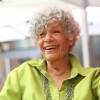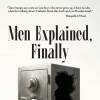Six Boston-area photographers have teamed up to create “Pandemic Boston” — a virtual exhibit that captures how COVID-19 transformed life in the city and its surrounding areas starting in mid-March. The exhibit features six sets of photographs, each focusing on a different part of pandemic life. WGBH Radio’s Henry Santoro spoke with the curator, Edward Boches, who photographed the once-packed city spaces that became empty overnight. The transcript below has been edited for clarity.
Henry Santoro: You're used to photographing the streets and sidewalks of Boston when they're bustling with people, but for the last three months, you've ridden around the city on a folding bicycle with your camera, capturing photographs of locations that are empty or nearly empty. What was that like for you?
Edward Boches: Well, it was definitely very weird and almost apocalyptic. But over time, I actually grew to enjoy it from an artistic perspective because I realized the city would hopefully never look this way again. The transformation was so fast and so visual that I just thought it was a really great subject to capture and record photographically.
Santoro: You're right. I mean, one minute, these areas were filled with people, and the next minute, they were just barren with nobody around.
Boches: Yeah, the governor declared a state of emergency on March 10, the World Health Organization declared a pandemic on March 11, and I noticed an almost immediate change on March 12. I was cycling into Kenmore Square — where you have the intersection of three major roads, Fenway Park, a major T stop, and bus stops — and literally, there was no one to be seen. And it suddenly struck me that this was really transformational. And from that point on, I started to look for places that would typically be crowded to try to see what they would look like with nobody there.
Santoro: When did you realize that your work on this project should not just stand on its own, but rather it should be part of something even bigger?
Boches: Well, in the age of Instagram, of course, we all see everybody else's work at the same time we're posting some of ours. And a photographer I knew quite well named Jeff Larason had been driving all over the state, photographing signs and store windows. And at the same time, I saw a photographer who I didn't know in person, named Margaret Lampert, doing portraits of people sheltering in place through windows and screens. And I thought they were quite stunning, beautiful images. And that's when I realized, “Wow, there's a lot of different ways to be telling this story visually.” I started reaching out to people asking them if they wanted to participate, and the instant reaction was really quite positive.
Santoro: When people look back on this exhibit in the future, what do you think, or what do you hope, they're going to get out of it?
Boches: I hope they'll remember that this moment existed, that this is what it looked like, and that we should preserve this memory to remind us of the things we don't want to happen again. I also hope they'll look at the fact that artists, photographers — anyone who creates something — have an obligation to document and cover the moments in which we live and the events that affect our lives. And then I hope that other photographers and artists will look at this and realize there's value in collaboration, and there are also opportunities to find ways to innovate and bring work to the market even when we can't exhibit, even when the galleries are closed.
Santoro: Edward Boches curated and contributed to the exhibit “Pandemic Boston,” which you can find at pandemicboston.com. Do yourself a favor, and get over there and check out these photographs
WGBH News Intern Abby Hunt contributed to this interview.





